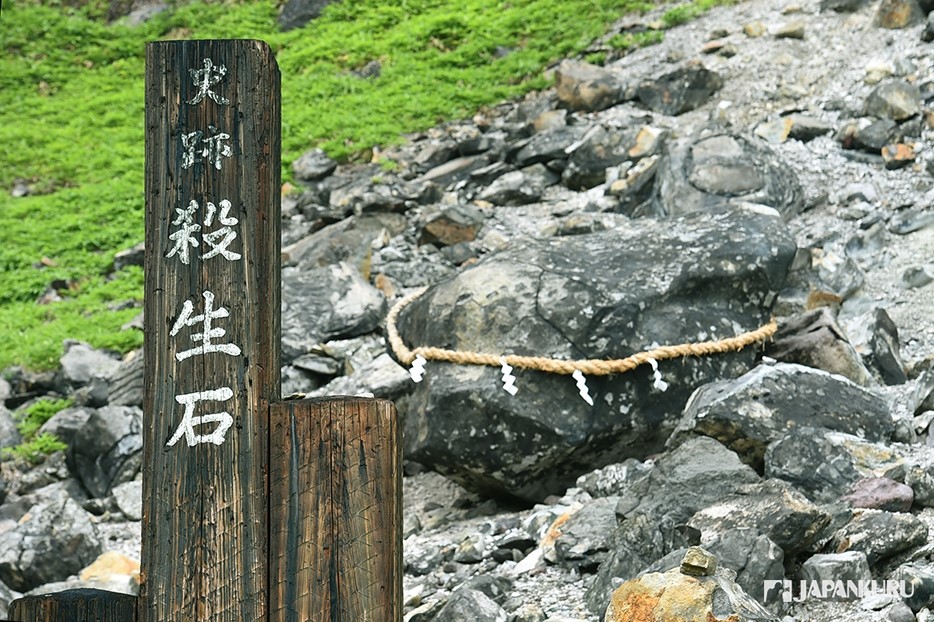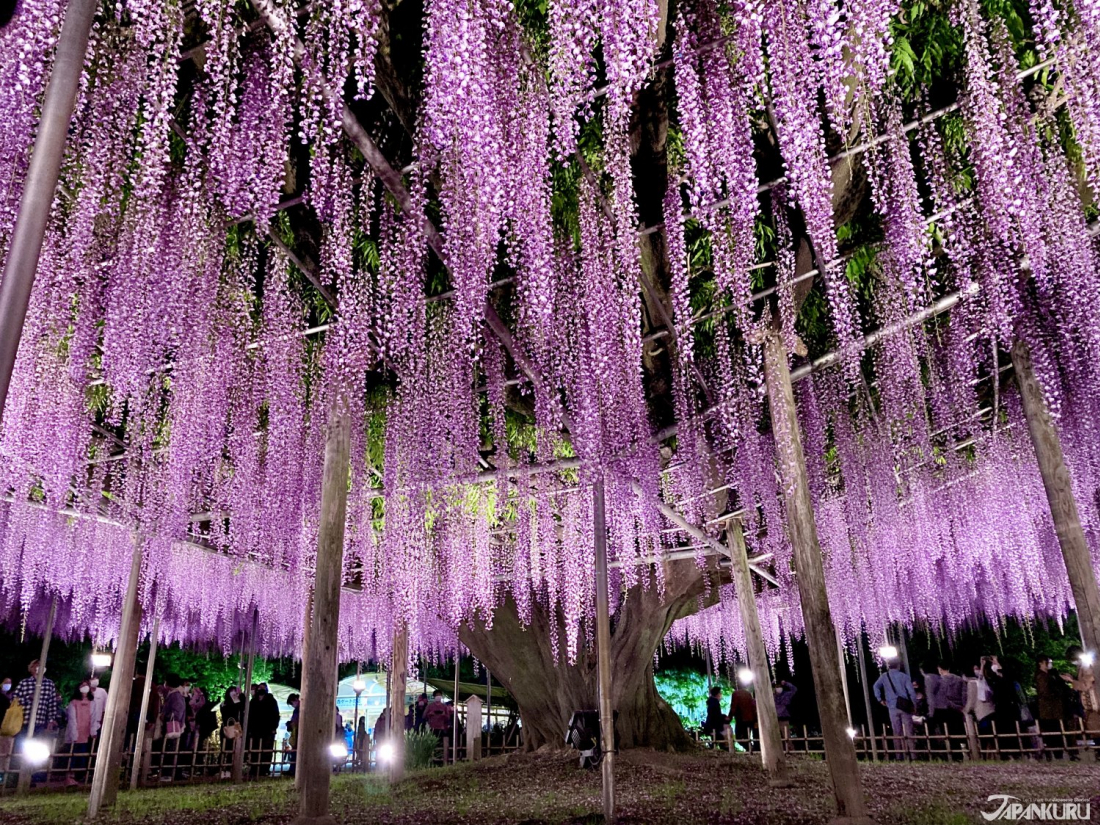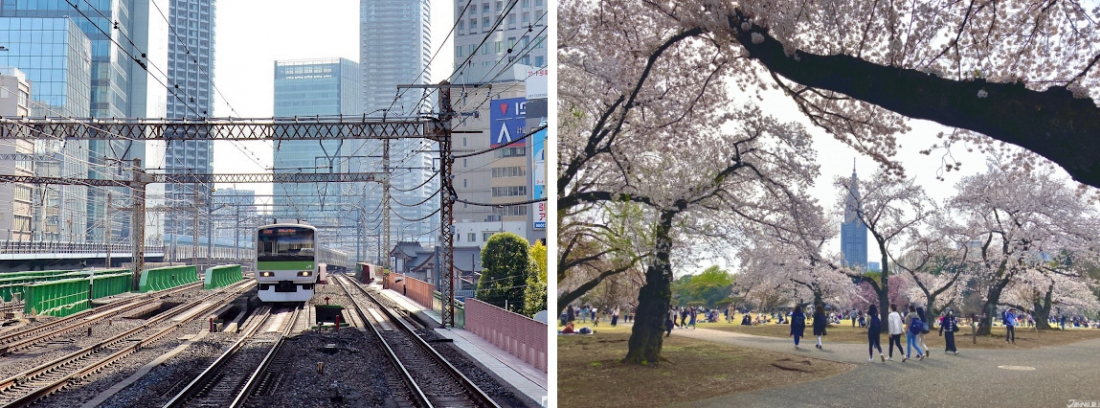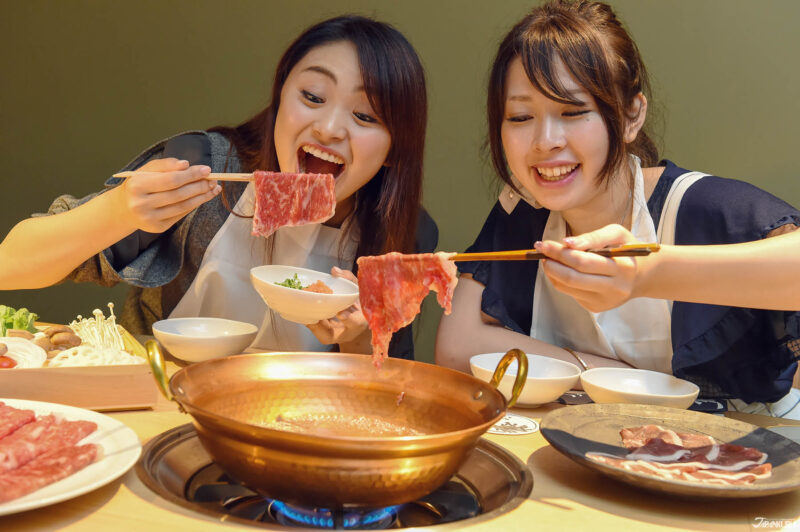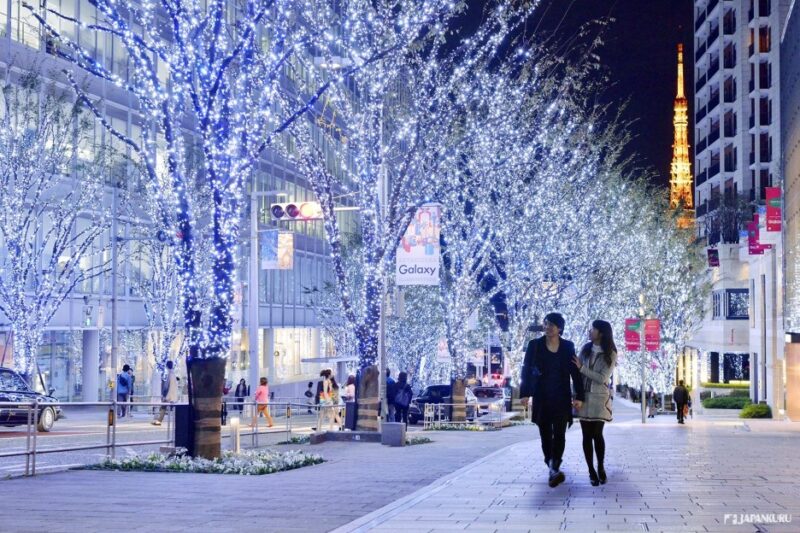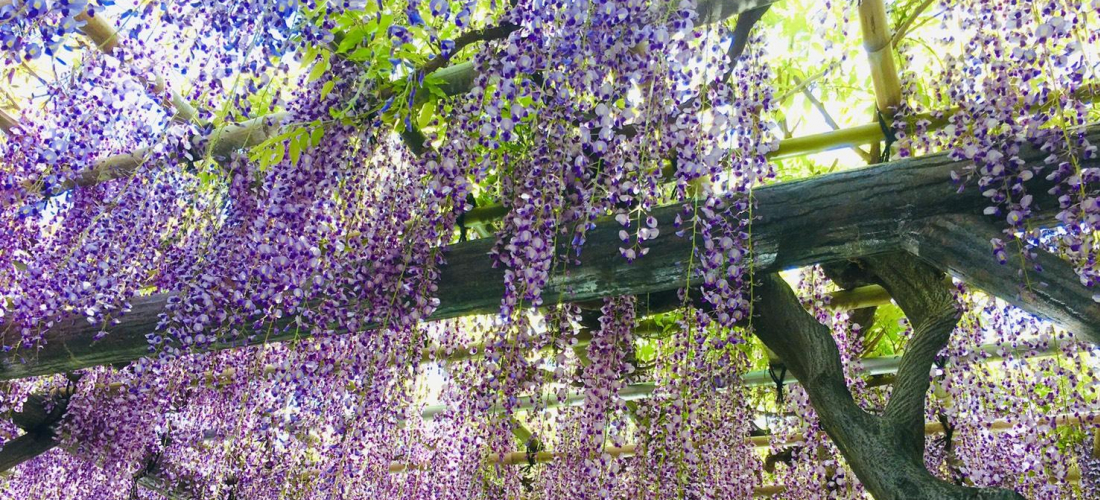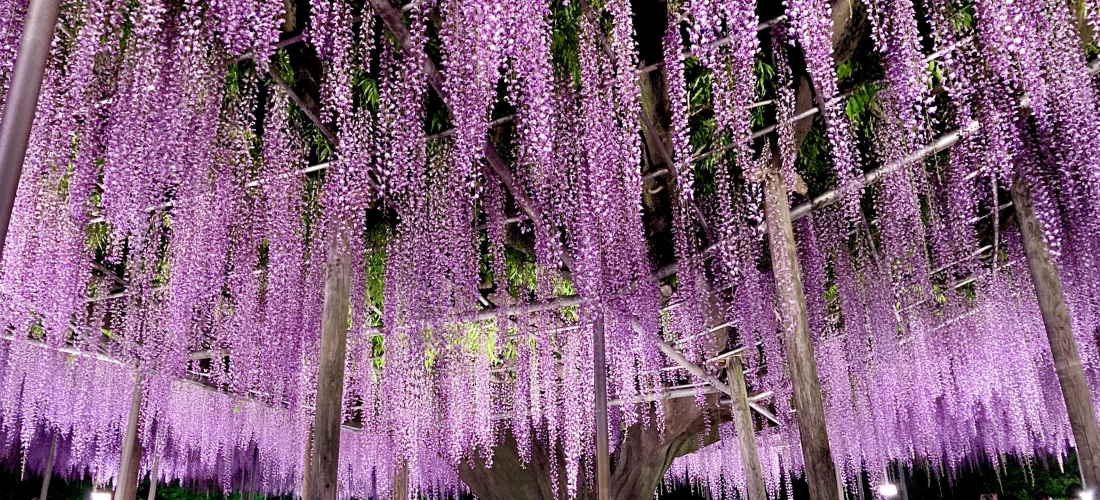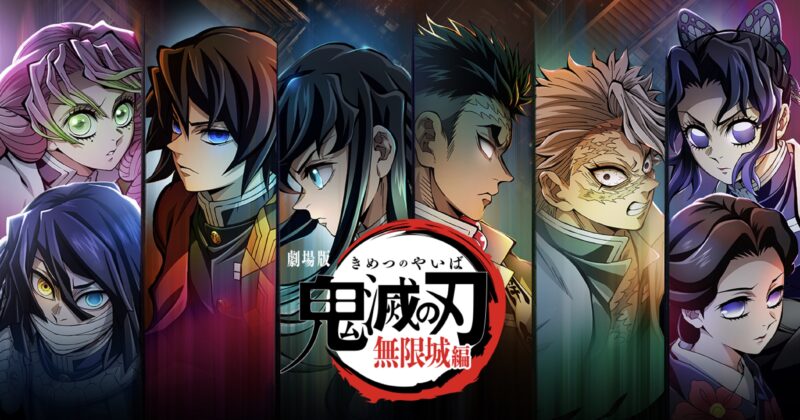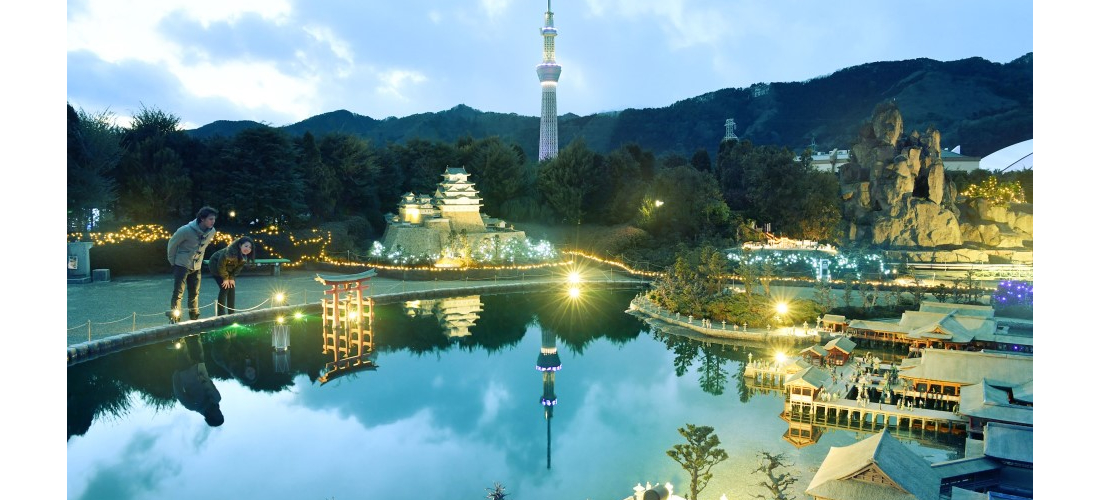CONTENTS
If you’re torn between otaku culture and traditional sightseeing, these unexpected destinations are for you!
Otaku Travel in Japan
Do you sometimes wish you could jump right into an anime and experience it for yourself? For many travelers in Japan, "otaku travel" means shopping in Akihabara, a meal at a maid cafe, or maybe a trip to Ikebukuro. But of course, that's just the start – Japan has kind of a lot to offer anime lovers and nerds of all kinds who visit the country. Search out the right places, and you can visit real anime scenery, recreate the magic of your favorite anime moments, and immerse yourself in lore that toes the line between real traditions and anime backstory. These three spots are all in the real world, but you shouldn't miss the chance to add them to your travel itinerary for a little anime magic.
➡ Naruto | The Killing Stone
Naruto fans with more than a passing interest will know that, sealed away within the anime's main character and providing a source of unbridled power, is the nine-tailed fox spirit of legend, Kurama. But as it turns out, that isn't just a Naruto legend. The nine-tailed fox is a tricksy spirit that has shown up in Asian mythology for centuries, performing all kinds of illusions, tricking people by transforming into various human forms, and generally getting up to mischief. And for at least one version of the nine-tailed fox, their rather restless resting place is said to be the Sessho-seki (殺生石), often called the "Killing Stone" in English. Almost 1,000 years ago, the nine-tailed fox was said to be plotting the death of Japan's Emperor Toba, on behalf of a daimyo looking to gain more power. Fortunately for the emperor, famous warrior Miura-no-suke killed the many-tailed fox, and the corpse transformed into a small boulder: the Sessho-seki. Instead of Naruto's heart, it's within this stone that the feisty fox would rest for all eternity – or so Emperor Toba hoped. Instead, later priests who came near the stone still felt the threatening power of this spirit, and attempted exorcisms to calm the nine-tailed fox's power.
Between the warrior and well-meaning priests, all seemed well until March 2022, when the Sessho-seki SPLIT IN HALF. (Where's Naruto when you need him to calm a fox spirit!?) A modern Shinto priest once again came and attempted to ward away the nine-tailed fox and its mischievous powers, but locals say that these days, you might just see the "kyubi" running around the rocky hill where it was trapped for all those centuries. (Or popping up on your phone screen, with the help Nasu's augmented reality setup.) Now, unhampered by the stone, Kurama is ready to unleash all that power that made Naruto the ninja he was. We understand if you want to throw on a Naruto t-shirt or grab some Naruto charms before you visit, for a little extra protection from this feisty fox. Watch out!
Sessho-seki (殺生石)
182 Yumoto, Nasu-machi, Nasu, Tochigi
Tochigi Travel Page (jp)
➡ Demon Slayer: Kimetsu no Yaiba | Ashikaga Flower Park
When Tanjiro Kamado takes the first major step towards his future in Demon Slayer: Kimetsu no Yaiba, he commits to becoming, well, a demon slayer. But even after intense training, trying his best to break a stone in half as well as a nine-tailed fox, in the end the only way to join the ranks of the Demon Slayer Corps is to face the final selection, proving himself on Mount Fujikasane. Not only is this a significant part of Tanjiro's story, but the eerie, magical, and undeniably beautiful scenery of flowing purple wisterias (called "fuji" in Japanese) has become an iconic image from the series. Whether fighting vicious battles against Japanese demons sounds like a fun adventure to you or not, it's hard not to wish you could visit such a tantalizingly mystical location.
The bad news: Mount Fujikasane is not a real place, and you cannot visit. The good news: there are wisteria gardens around Japan that make for pretty fantastic substitutes! Ashikaga Flower Park, in particular, is famous for fantastic wisterias and gardens that look amazing throughout the year. In the spring, when wisterias bloom in late April, the park has some of the largest wisteria trees in the world, and the trailing flowers hang overhead in canopies of purple petals. After dark, the flowers are lit from below, and things really start to look like a scene from an anime. But even in during the cooler months of the year, long after the flowers have fallen away, the scenery remains spectacular thanks to the flower park's "wisteria illumination." Strands of small purple flower lights take the place of spring blooms, lighting up the night with a mysterious wisteria glow. The flower park's wisterias have been famous for years, but in the years since Demon Slayer rose to popularity, cosplayers (and kids playing dress-up) can almost always be spotted taking photos at the park. If you want to take some on-theme pictures, but aren't quite up to full-on cosplay during your trip to Tochigi, you can always live out your dreams by throwing on a Tanjiro Kamado hoodie, a Tanjiro Kamado shawl, Tanjiro Kamado gloves, and Tanjiro Kamado earrings. The demons will be quaking in their boots.
Of course, the setting of Demon Slayer is mostly just Taisho-era (1912-1926) Japan, which means that if you're more interested in visiting real-life locations that made it into the anime, there are plenty of those too. Mount Kumotori or Kumotoriyama, the mountain where Tanjiro grew up, is a real landmark right on the edge of modern-day Tokyo, as is Mount Otake, the mountain where Inosuke was raised in the wild. Both mountains can be hiked, but they're just nice mountains – there's not much to make these destinations particularly exciting for anime fans!
Ashikaga Flower Park (あしかがフラワーパーク)
Hasamacho, Ashikaga, Tochigi
Official Website (en)
➡ Your Name, Weathering With You, & Other Makoto Shinkai Films | Shinjuku
Director Makoto Shinkai has become a big name in animated films in recent years, largely thanks to the international popularity of the 2016 smash hit Your Name, which is still the third-highest-grossing anime film of all time. Your Name is set for about half the time in a small town off in the rural prefecture of Gifu, but for the other half of the film, and for the whole runtime of many of Shinkai's other films, Tokyo is an important setting. Many of the scenes of his movies feature extremely accurate replications of real-life locations in the city, down to the smallest street signs and other details, which can be picked out by eagle-eyed travelers in real life. Shinjuku, in particular, is where quite a few of Shinkai's characters spend their time, which means that anime-viewers with a good memory are likely to recognize quite a few random Shinjuku street corners, alleys, and shop fronts just from film backgrounds. (We recommend listening to the Radwimps soundtrack for Your Name as you explore the city for a little extra Makoto Shinkai atmosphere.)
Particular Makoto Shinkai anime spots you can keep an eye out for in Shinjuku include the famous steps where Mitsuha and Taki meet at the very end of Your Name, a part of the Yotsuya Suga Shrine, and the most iconic locations in The Garden of Words, including the JR platforms of Shinjuku Station, and the little roofed shelters that shield Takao and Yukino from the rain within the Japanese garden at Shinjuku Gyoen. Unfortunately, the dilapidated Yoyogi Kaikan seen in Weathering with You, where Hina proves her powers to Hodaka at the rooftop shrine, was entirely demolished in 2019 and 2020. At least you can still experience some uncanny deja vu by walking through many of the streets where the two characters desperately run from adults who chase them down throughout the film! The southern exit of Shinjuku Station is immediately recognizable in the movie thanks to the huge green sign that is just as bright in real life, and this spot just north of the station, where police question a certain gangster about Hodaka's whereabouts, stands out thanks to the colorful mural you can still find under the train tracks.
Shinjuku Gyoen National Garden (新宿御苑)
11 Naitomachi, Shinjuku City, Tokyo
Official Website (jp)
Seeing Japan as an Anime Lover
Whether your taste in anime focuses more on the mythology-inspired fantasy of nine-tailed fox spirits and traditional demon ogres, or the real-life human stories of people living their lives in downtown Tokyo, sometimes a trip to Japan really can feel like stepping into a scene from your favorite show. And while a little zing of anime nostalgia can be found around any corner in this country, all it takes is a little bit of planning to cross an anime experience or two off your bucket list. Next time you're looking for an unusual sightseeing destination, add one of these spots to your itinerary and bring your anime dreams to life!
Details
NAME:Otaku Sightseeing
Looking for the latest trends and products coming out of Japan? We've got you covered!
COMMENT
FEATURED MEDIA
VIEW MORE 
A New Tokyo Animal Destination: Relax & Learn About the World’s Animals in Japan
#pr #japankuru #anitouch #anitouchtokyodome #capybara #capybaracafe #animalcafe #tokyotrip #japantrip #카피바라 #애니터치 #아이와가볼만한곳 #도쿄여행 #가족여행 #東京旅遊 #東京親子景點 #日本動物互動體驗 #水豚泡澡 #東京巨蛋城 #เที่ยวญี่ปุ่น2025 #ที่เที่ยวครอบครัว #สวนสัตว์ในร่ม #TokyoDomeCity #anitouchtokyodome

Shohei Ohtani Collab Developed Products & Other Japanese Drugstore Recommendations From Kowa
#pr #japankuru
#kowa #syncronkowa #japanshopping #preworkout #postworkout #tokyoshopping #japantrip #일본쇼핑 #일본이온음료 #오타니 #오타니쇼헤이 #코와 #興和 #日本必買 #日本旅遊 #運動補充能量 #運動飲品 #ช้อปปิ้งญี่ปุ่น #เครื่องดื่มออกกำลังกาย #นักกีฬา #ผลิตภัณฑ์ญี่ปุ่น #อาหารเสริมญี่ปุ่น

도쿄 근교 당일치기 여행 추천! 작은 에도라 불리는 ‘가와고에’
세이부 ‘가와고에 패스(디지털)’ 하나면 편리하게 이동 + 가성비까지 완벽하게! 필름카메라 감성 가득한 레트로 거리 길거리 먹방부터 귀여움 끝판왕 핫플&포토 스폿까지 총집합!
Looking for day trips from Tokyo? Try Kawagoe, AKA Little Edo!
Use the SEIBU KAWAGOE PASS (Digital) for easy, affordable transportation!
Check out the historic streets of Kawagoe for some great street food and plenty of picturesque retro photo ops.
#pr #japankuru #도쿄근교여행 #가와고에 #가와고에패스 #세이부패스 #기모노체험 #가와고에여행 #도쿄여행코스 #도쿄근교당일치기 #세이부가와고에패스
#tokyotrip #kawagoe #tokyodaytrip #seibukawagoepass #kimono #japantrip

Hirakata Park, Osaka: Enjoy the Classic Japanese Theme Park Experience!
#pr #japankuru #hirakatapark #amusementpark #japantrip #osakatrip #familytrip #rollercoaster #retrôvibes #枚方公園 #大阪旅遊 #關西私房景點 #日本親子旅行 #日本遊樂園 #木造雲霄飛車 #히라카타파크 #สวนสนุกฮิราคาตะพาร์ค

🍵Love Matcha? Upgrade Your Matcha Experience With Tsujiri!
・160년 전통 일본 말차 브랜드 츠지리에서 말차 덕후들이 픽한 인기템만 골라봤어요
・抹茶控的天堂!甜點、餅乾、飲品一次滿足,連伴手禮都幫你列好清單了
・ส่องมัทฉะสุดฮิต พร้อมพาเที่ยวร้านดังในอุจิ เกียวโต
#pr #japankuru #matcha #matchalover #uji #kyoto #japantrip #ujimatcha #matchalatte #matchasweets #tsujiri #말차 #말차덕후 #츠지리 #교토여행 #말차라떼 #辻利抹茶 #抹茶控 #日本抹茶 #宇治 #宇治抹茶 #日本伴手禮 #抹茶拿鐵 #抹茶甜點 #มัทฉะ #ของฝากญี่ปุ่น #ชาเขียวญี่ปุ่น #ซึจิริ #เกียวโต

・What Is Nenaito? And How Does This Sleep Care Supplement Work?
・你的睡眠保健品——認識「睡眠茶氨酸錠」
・수면 케어 서플리먼트 ‘네나이토’란?
・ผลิตภัณฑ์เสริมอาหารดูแลการนอน “Nenaito(ネナイト)” คืออะไร?
#pr #japankuru #sleepcare #japanshopping #nenaito #sleepsupplement #asahi #睡眠茶氨酸錠 #睡眠保健 #朝日 #l茶胺酸 #日本藥妝 #日本必買 #일본쇼핑 #수면 #건강하자 #네나이토 #일본영양제 #อาหารเสริมญี่ปุ่น #ช้อปปิ้งญี่ปุ่น #ร้านขายยาญี่ปุ่น #ดูแลตัวเองก่อนนอน #อาซาฮิ

Japanese Drugstore Must-Buys! Essential Items from Hisamitsu® Pharmaceutical
#PR #japankuru #hisamitsu #salonpas #feitas #hisamitsupharmaceutical #japanshopping #tokyoshopping #traveltips #japanhaul #japantrip #japantravel

Whether you grew up with Dragon Ball or you just fell in love with Dragon Ball DAIMA, you'll like the newest JINS collab. Shop this limited-edition Dragon Ball accessory collection to find some of the best Dragon Ball merchandise in Japan!
>> Find out more at Japankuru.com! (link in bio)
#japankuru #dragonball #dragonballdaima #animecollab #japanshopping #jins #japaneseglasses #japantravel #animemerch #pr

This month, Japankuru teamed up with @official_korekoko to invite three influencers (originally from Thailand, China, and Taiwan) on a trip to Yokohama. Check out the article (in Chinese) on Japankuru.com for all of their travel tips and photography hints - and look forward to more cool collaborations coming soon!
【橫濱夜散策 x 教你怎麼拍出網美照 📸✨】
每次來日本玩,是不是都會先找旅日網紅的推薦清單?
這次,我們邀請擁有日本豐富旅遊經驗的🇹🇭泰國、🇨🇳中國、🇹🇼台灣網紅,帶你走進夜晚的橫濱!從玩樂路線到拍照技巧,教你怎麼拍出最美的夜景照。那些熟悉的景點,換個視角說不定會有新發現~快跟他們一起出發吧!
#japankuru #橫濱紅磚倉庫 #汽車道 #中華街 #yokohama #japankuru #橫濱紅磚倉庫 #汽車道 #中華街 #yokohama #yokohamaredbrickwarehouse #yokohamachinatown

If you’re a fan of Vivienne Westwood's Japanese designs, and you’re looking forward to shopping in Harajuku this summer, we’ve got important news for you. Vivienne Westwood RED LABEL Laforet Harajuku is now closed for renovations - but the grand reopening is scheduled for July!
>> Find out more at Japankuru.com! (link in bio)
#japankuru #viviennewestwood #harajuku #omotesando #viviennewestwoodredlabel #viviennewestwoodjapan #비비안웨스트우드 #오모테산도 #하라주쿠 #日本購物 #薇薇安魏斯伍德 #日本時尚 #原宿 #表參道 #japantrip #japanshopping #pr

Ready to see TeamLab in Kyoto!? At TeamLab Biovortex Kyoto, the collective is taking their acclaimed immersive art and bringing it to Japan's ancient capital. We can't wait to see it for ourselves this autumn!
>> Find out more at Japankuru.com! (link in bio)
#japankuru #teamlab #teamlabbiovortex #kyoto #kyototrip #japantravel #artnews
Photos courtesy of teamLab, Exhibition view of teamLab Biovortex Kyoto, 2025, Kyoto ® teamLab, courtesy Pace Gallery

Japanese Makeup Shopping • A Trip to Kamakura & Enoshima With Canmake’s Cool-Toned Summer Makeup
#pr #canmake #enoshima #enoden #에노시마 #캔메이크 #japanesemakeup #japanesecosmetics

⚔️The Robot Restaurant is gone, but the Samurai Restaurant is here to take its place. Check it out, and don't forget your coupon!
🍣신주쿠의 명소 로봇 레스토랑이 사무라이 레스토랑으로 부활! 절찬 쿠폰 발급중
💃18歲以上才能入場的歌舞秀,和你想的不一樣!拿好優惠券去看看~
#tokyo #shinjuku #samurairestaurant #robotrestaurant #tokyotrip #도쿄여행 #신주쿠 #사무라이레스토랑 #이색체험 #할인이벤트 #歌舞伎町 #東京景點 #武士餐廳 #日本表演 #日本文化體驗 #japankuru #japantrip #japantravel #japanlovers #japan_of_insta

Japanese appliance & electronics shopping with our KOJIMA x BicCamera coupon!
用JAPANKURU的KOJIMA x BicCamera優惠券買這些正好❤️
코지마 x 빅 카메라 쿠폰으로 일본 가전 제품 쇼핑하기
#pr #japankuru #japanshopping #kojima #biccamera #japaneseskincare #yaman #dji #osmopocket3 #skincaredevice #日本購物 #美容儀 #相機 #雅萌 #日本家電 #일본여행 #면세 #여행꿀팁 #일본쇼핑리스트 #쿠폰 #일본쇼핑 #일본브랜드 #할인 #코지마 #빅카메라 #japankurucoupon


